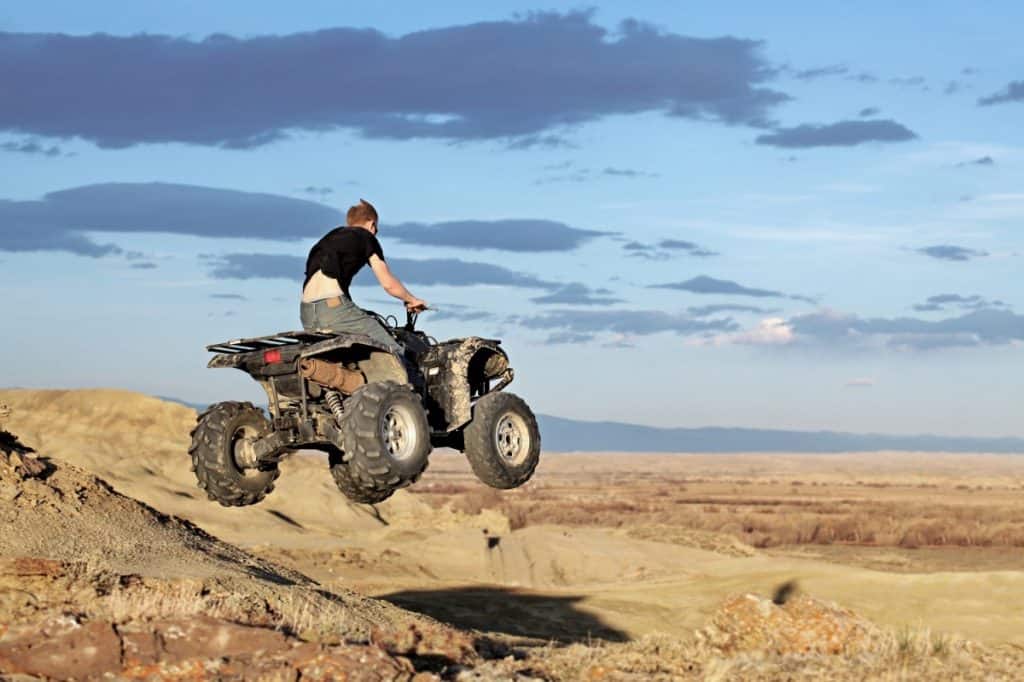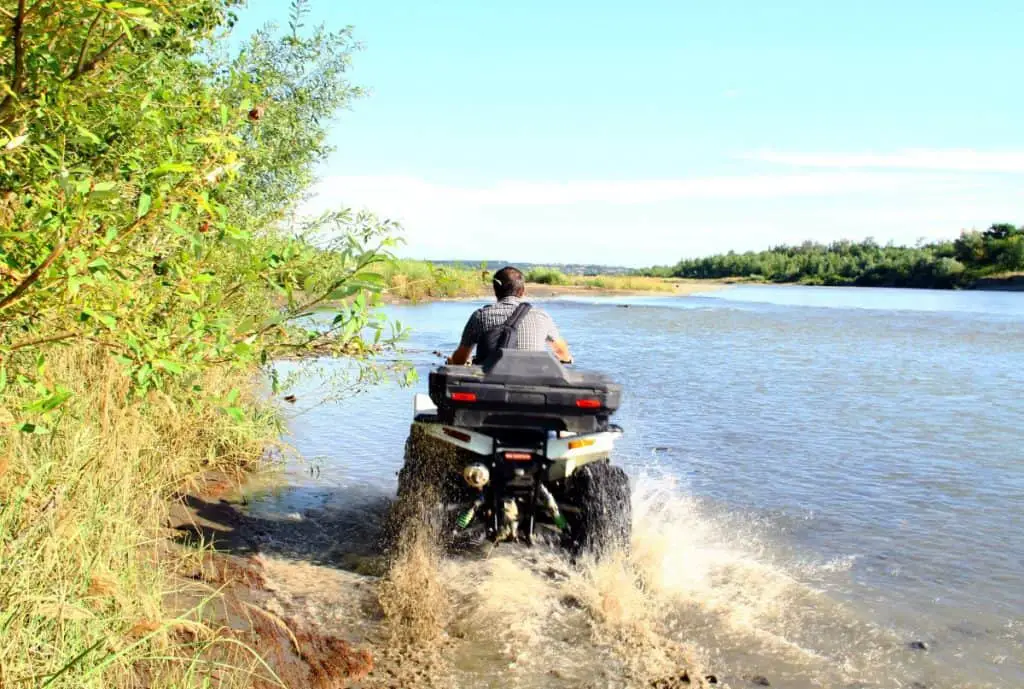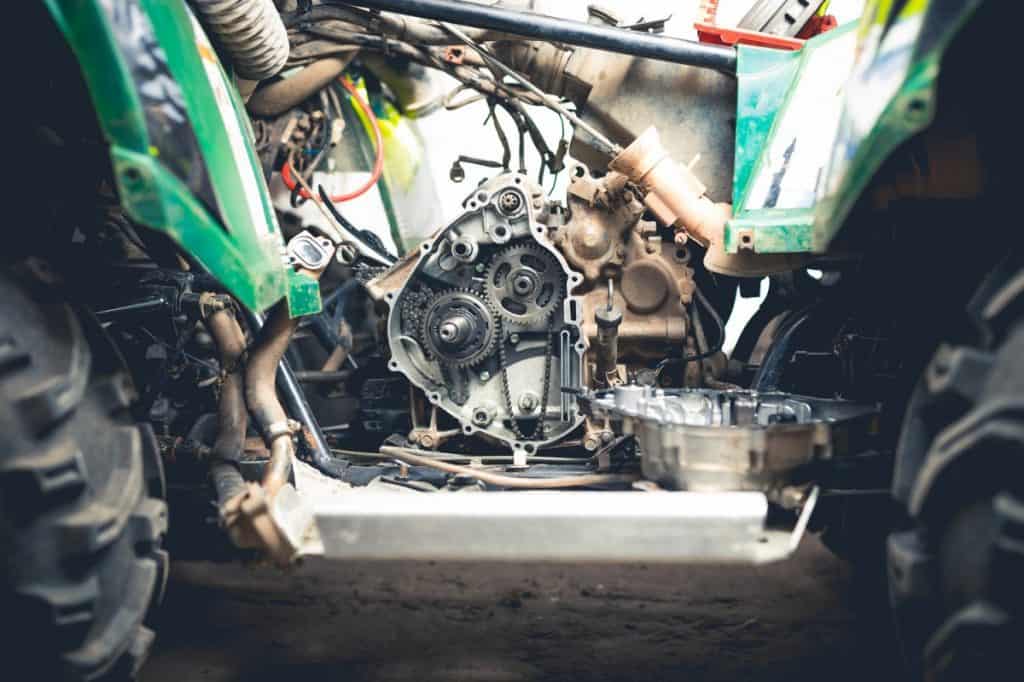I’m a big fan of my four wheeler and get out on it any chance I get. I have been concerned about it overheating since it seems to run hot, so I wanted to know what the operating temperature of an ATV engine should be. I did some research and here’s what I found.
On average, 200°F (93°C) is the normal operating temperature for a four wheeler or ATV. None of the owner’s manuals for the most popular ATV brands list the operating temperature. But, the vast majority of people say an ATV operates between 190°F (88°C) and 215°F (101.6°C).
Most people report that ATV engines run quite hot, so today I’ll explain how to know if your four wheeler/ATV is overheating, what can cause an ATV to overheat, and how hot is too hot for an ATV engine.

How Do I Know If My Four Wheeler Is Overheating?
On the dashboard of most ATVs, there is a warning light that will come on when an ATV is overheating. This light is usually a thermometer icon. Some also have a digital thermostat that reads the temperature or has an analog temperature gauge. ATVs will typically operate below about 215°F (101.6°C).
Some four wheelers such as Honda’s have a digital display bar that fills up and goes down to indicate the temperature of the engine. However, on these models, they display the temperature of the coolant, rather than the temperature of the engine.
If the temperature gets significantly above that on the digital display then it can be a sign to let your ATV idle for 5 to 10 minutes to cool down. With an analog temperature gauge, there is a white area and a red area. When the dial goes up to the red area then it’s overheating. If there is steam coming out of the engine it’s also a clear sign that the engine is overheating.
In general, when the thermostat light comes on you should stop riding your ATV as soon as it’s safe to do so. Then let it idle for 10 minutes to cool down. If the thermostat light stays on after 10 minutes then you should turn your ATV off and let the thermostat cool. There are various reasons why an ATV will overheat.
5 main reasons a four wheeler/ATV overheats
There are four 4 mains why an ATV or 4 wheeler will overheat, these are:
- Coolant levels are too low
- Prolonged full throttle use
- The radiator caked in mud
- There is a mechanical or electrical engine issue
- Overloading your ATV
The coolant is responsible for cooling the engine. Over time the coolant will evaporate off but not by much. Overall it should lose about ¼ of an inch (0.5 cm) from the top every 4 months or so. If it drops down quite a lot, and you notice you need to fill up the coolant quite often, say once every 6 months, then there is likely a leak.

Using water instead of coolant to get the ATV home
Before opening the radiator cap you should let it cool and use a thick cloth to protect yourself from any hot steam that can come out of the radiator.
Some ATV owner’s manuals say you can use water instead of coolant in the short term to get it back to where you can fill it with coolant. But, you should use coolant rather than water, in general, as it’s much more effective at cooling the engine.
Virtually all ATV owner’s manuals say to check the coolant levels before riding your ATV. And to check it after the first month, and the first 3 months. After that, they say to check the coolant levels once every 6 months, or 1600 miles (2500 km), or 160 hours, whichever comes first.
Riding your ATV while having the throttle at the maximum for prolonged periods will also cause an ATV to overheat. Generally, you’ll switch gears once the revs get high, or it will change gears automatically on an automatic.
But, if you don’t or once you change gears you immediately open the throttle to the max then it can overheat the engine. This generally happens if you’re trying to make your ATV or 4 wheeler accelerate as fast as possible.
A radiator that’s caked in mud doesn’t allow air to pass through it. This causes it not to cool the engine as it should. So, it can cause your ATV to overheat. A mechanical or electrical issue can cause the coolant not to circulate through the engine. For example, if a coolant hose is broken it will leak coolant.
Finally, every ATV has a weight capacity. If you load it so that it goes over the weight capacity it will cause the engine to work harder and as a result, can cause your ATV to overheat.
How Hot Is Too Hot for an ATV Engine?
When an ATV engine runs hot it can cause it to evaporate various liquids that are in the engine, which means they don’t circulate around the engine as they should. But, how hot is too hot for an ATV engine.
Generally, the thermostat on an ATV will indicate when the engine is too hot. Most ATVs operate between 190°F (88°C) and 215°F (101.6°C). Different engine oil is also recommended based on the climate where the ATV is ridden. But, the climate isn’t hotter than the operating temperature of an ATV.
Any significantly hotter temperature than this can cause the thermostat light to come on. And indicates that the ATV needs to be idled to cool down. Or, that the engine should be turned off to allow it to cool.

What Causes an ATV To Overheat?
When an ATV overheats it’s an inconvenience because you can’t ride your ATV, and need to give it time to cool down. So, I thought I’d summarize the reasons why an ATV overheats so you can avoid it, or identify the issue.
Overall, prolonged full-throttle use, a radiator covered in mud or dust, overloading the weight capacity of an ATV, low coolant levels, and a mechanical or electrical issue will cause an ATV to overheat. An ATV that is overheating should be idled for 10 minutes when safe to do so.
Some ATV owners’ manuals recommend turning the engine off as soon as safely possible once the thermostat displays a warning light. Whereas others say to idle it for 10 minutes to allow it to cool, and if the light is still on, then shut it off.
As a general rule, to cool it down the fastest, turn the engine off in an area with the most shade and wind. As this will help the engine to cool down as fast as possible.
